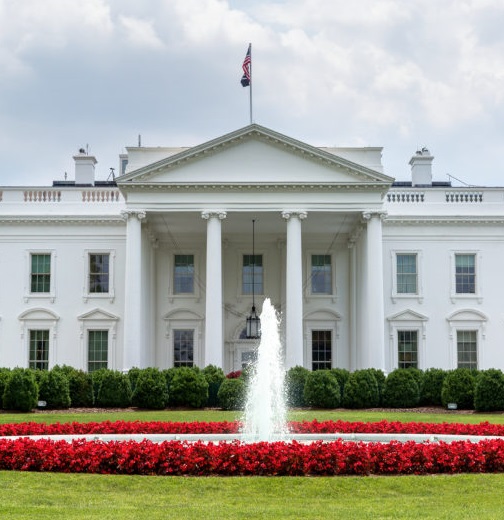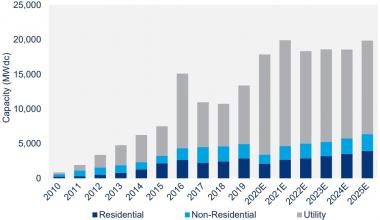Biden sets out rapid $2 trillion clean energy plan; Energy storage wins in FERC court ruling
Our pick of the latest solar news you need to know.

Related Articles
Joe Biden pledges to spend $2 trillion on clean energy in first term
US presidential hopeful Joe Biden has set out a $2 trillion spending plan for clean energy and sustainable infrastructure, pledging to install 500 million solar panels and achieve net zero carbon emissions in the power sector by 2035.
The Democratic nominee has pledged to spend the $2 trillion in his first term, far faster than previously proposed.
Biden proposes to reform and extend tax incentives that support clean energy and implement a technology-neutral "Energy Efficiency and Clean Electricity Standard (EECES)" for utilities and grid operators.
Biden's team plans to "dramatically expand" solar and wind energy deployment through community-based and utility-scale systems, including 8 million solar roofs and community solar systems and 60,000 onshore and offshore wind turbines.
Investments will also be channeled into battery storage technology to accelerate deployment in the power sector and for electric vehicles, it said.
Forecast US solar installations by segment
(Click image to enlarge)
Source: Wood Mackenzie, SEIA (June 2020)
Biden's clean energy initiative incorporates recommendations from a joint task force created by Biden and former contender Bernie Sanders, published on July 8.
The US presidential election is scheduled for November 3.
US court upholds FERC order in win for energy storage
In a major victory for the energy storage sector, a US Court of Appeal has upheld legislation by the Federal Energy Regulatory Commission (FERC) that allows distributed energy storage assets to participate in wholesale markets.
On July 10, the Court of Appeals for the District of Columbia Circuit (D.C. Circuit Court) upheld FERC’s Order No. 841, following appeals from the National Association of Regulatory Utility Commissioners and the American Public Power Association, amongst others, to opt out.
Issued in 2018, FERC Order 841 requires market operators to implement regulation that allows energy storage to participate in wholesale power markets, including real-time and reserve markets.
“This is an enormous step for energy storage, with the affirmation that energy storage connected at the distribution level must have the option to access wholesale markets, allowing homes and businesses to contribute to the resiliency, efficiency, sustainability, and affordability of the grid,” Kelly Speakes-Backman, CEO of the Energy Storage Association (ESA), said in a statement.
“This latest affirmation of Order 841 is especially important as it ensures energy storage can contribute all its values to the grid, regardless of its connection point," Speakes-Backman said. "As our electric system becomes more modernized and distributed, we are seeing the regulatory frameworks at both the wholesale and retail levels adjust to that reality."
The Solar Energy Industry Association (SEIA) also commended the ruling.
"Energy storage is a critical part of our clean energy transformation and will be a key part of solar’s goal to provide 20% of U.S. electricity generation by 2030," Katherine Gensler, vice president of regulatory affairs at the SEIA, said in a statement.
“...Still, we have a long way to go in terms of creating fair and open markets for all generators. We urge FERC to publish a final rule on wholesale market participation for distributed energy resources,” Gensler said.
UK accelerates energy storage permit process
UK government has relaxed planning rules for large-scale battery storage projects in order to accelerate deployment, it said July 14.
The government carved out electricity storage from Nationally Significant Infrastructure Projects (NSIP) regime in England and Wales, allowing developers to apply through faster local planning regimes. The new rules apply for projects of capacity over 50 MW in England and over 350 MW in Wales and exclude pumped hydro projects.
"Removing barriers for energy storage projects, which are discouraging bolder investment decisions in larger battery facilities, could treble the number of batteries serving the electricity grid," the government said in a statement.
“We welcome the decision to make it easier to deploy flexible large-scale energy storage technologies in the UK, which will help to further decarbonize and improve the resilience of our energy system,” Chris Hewett, chief executive of the UK Solar Trade Association (STA) said.
“The next steps in unlocking the potential of energy storage, and maximizing the crucial role it can play in managing growing solar and wind output, are to provide greater access to flexibility markets, including the capacity market, and applying fairer network charging rules,” he said.
The government's move comes amid growing activity in solar plus storage and a rapid expansion in UK offshore wind capacity.
The UK has committed to achieving net zero carbon emissions by 2050 and increasing UK offshore wind capacity from around 10 GW, to 40 GW by 2030.
Capital Dynamics, Tenaska agree 4.8 GW solar deal
Capital Dynamics has entered into a new strategic agreement with developer Tenaska to develop 4.8 GW of solar projects in the Midcontinent Independent System Operator (MISO) and Southeast Reliability Council (SERC) markets, the company announced July 8.
The deal includes 24 solar projects and follows a partnership between the groups in November 2018 for 2 GW of capacity in the MISO market, situated in the states of Michigan, Missouri, Illinois, Wisconsin, Indiana and Minnesota.
The latest deal "represents a large share of solar projects currently in the MISO and SERC interconnection pipelines and further diversifies Capital Dynamics’ growing utility-scale solar power portfolio across seven new states," Capital Dynamics said.
“We are pleased to enter into a new relationship with Tenaska in MISO and SERC, less than two years after our first MISO transaction,” Benoit Allehaut, Managing Director in Capital Dynamics’ Clean Energy Infrastructure business, said.
“The Tenaska team has done an excellent job overseeing a large portfolio of solar projects in attractive markets, and has worked well with our team in the past. We believe it is important to deliver competitive solar projects in regions where customers are switching to renewables,” he said.
Tenaska has developed 10.5 GW of gas and renewable power projects, including two solar projects in Southern California in which Capital Dynamics is an investor.
In October, Spanish group Acciona acquired 3 GW of U.S. PV projects and 1 GW of energy storage capacity being developed by Tenaska.
Acciona will work with Tenaska to complete the projects and plans to bring online eight of the plants, representing 1.5 GW of peak power capacity, by 2023, the company said.
Reuters Events

